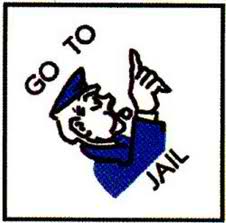I listen to a lot of music. A lot of disparate music. And sometimes I come across similarities that I never would have expected. Then I get excited–a rare occurrence for me–and go hunting the interwebs to find out what the deal is. Some jackass with a blog out there must have noticed this as well, right? Nope. I’m almost always let down, left dejected and isolated. So I thought, “I could be that jackass with a blog!”
In the spirit of the idea, I’m stealing a tag that I linked to in another post about stealing music and art and all that jazz. This strikes me as an idea hard to argue with. Of course art is theft. Artists aren’t reinventing the wheel every time they create something; there’s always a certain amount of borrowing going on. With that in mind, I’ll say that I generally think accusations of musical plagiarism are ridiculous. What I’d really like to accomplish here is to have some random internet music nerd e-mail me with: “Hey I noticed that too! Yeah it probably means nothin’.” It’s the small things that count.
This is one that I’ve heard a bagillion times but only picked up on recently:
Yeah, that’s a terrible song. BUT, the guitar intro is markedly similar to the beginning of Our Lady Peace’s Superman’s Dead:
Both song start with a solo guitar strumming Bbm-Db-Ab, with the Our Lady Peace song adding a B to the end of the progression instead of sitting on the Ab for two bars. Both are in 4/4. The strum pattern for both is essentially the same. Even the beats per minute for both tunes is similar: ~84 for Theory of a Deadman and ~92 for Our Lady Peace. Both of these bands have even tuned their instruments down a half-step.
Of course, none of this is super-amazing. Theory of a Deadman may actually be familiar with Our Lady Peace but they could have just as easily picked up this stuff from any rock band from 1990 onward. It’s just a slight variation to a ii-V-I progression–probably the most used progression in western music ever–that replaces the V chord with a IV chord. Although, Our Lady Peace throws in that B which is not super-common. I can’t even explain where that comes from or why it works, theoretically, off the top of my head. It might be the IV/IV/IV, which doesn’t seem likely, or they’re simply modulating to F# when they play the Bbm and B–even though they never play the I chord in F#. This seems more likely as the song doesn’t have a clear tonal center to me; it seems fairly modal. Maybe that’s why I actually like this song also. They’re spicing it up a bit, throwing subtle curveballs and whatnot.
In any case, all the elements mentioned are pretty common in rock music. I think the thing that made my ears perk up a bit was the fact that they all came together at once.
If anyone has suggestions, feel free to send ’em my way. I’d love to do these quick song analyses on a regular basis.

Recent Comments